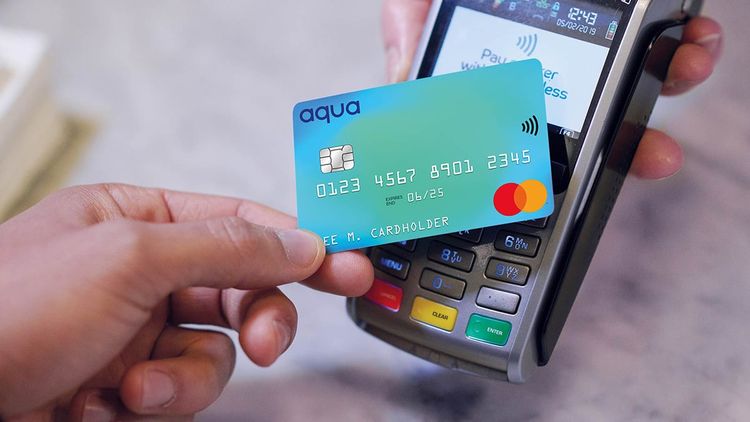How to increase your credit card limit
Looking to increase your credit card limit? Discover how to request an increase, what factors lenders consider, and tips to boost your chances of approval.

Increasing your credit card limit can offer more financial flexibility, improve your credit utilisation, and potentially help to avoid fees if you’re close to exceeding your limit.
But by increasing your limit, you could also be at risk of building more debt – especially if your spending exceeds what you can comfortably afford to repay each month.
For that reason, applying for a higher credit limit shouldn’t be an instant decision. It should be a responsible choice made from weighing up the pros and cons against your own financial situation.
What is a credit card limit?
A credit limit is the maximum amount you can spend on your credit card. When a lender sets your limit, they’ll consider a range of factors including your current debt, credit history, and credit score.
Should you demonstrate responsible repayment behaviour every month, lenders might extend your credit limit. Or, alternatively, you can often request an increase online, over the phone, or in-app.
Whatever the amount, it’s important you stay within your credit card limit. Exceeding what you’ve been authorised to borrow could impact your credit score and make it more difficult to secure future loans.
Should you increase your credit card limit?
To help you decide if a higher credit limit is the right decision, you should weigh up the pros and cons against your financial situation.
On the plus side, increasing your credit limit could help to maintain a lower credit utilisation ratio. For example, if your credit limit is £2,500 and car repairs cost £1,000, your credit utilisation is 40%. With an increased limit of £5,000, your utilisation drops to 20%.
You might also find an increased credit limit offers a financial cushion against large, unexpected expenses. With a stronger repayment ability, you’re also in a better position to protect your credit history and build your credit score (provided your account is managed well).
But as appealing as more credit might be, it’s important to consider the drawbacks that come with a higher borrowing ability. Without financial discipline, you could fall into more debt that might exceed what you can comfortably afford to repay each month.
You should also avoid requesting a higher credit limit if you’re currently struggling with your finances. Although it might seem like a viable solution, it could potentially put you in further debt and negatively impact your credit score.
For more information about credit limits and credit scores, visit our dedicated credit limit and score FAQs.
How to increase your credit card limit (step-by-step guide)
If you’ve considered the pros and cons, and feel a higher credit limit is the right financial decision, here’s our step-by-step guide to get you started.
Step 1: Check your current limit and account history
Before you apply for a higher credit limit, you should check your account history to assess your financial behaviour and whether there are any red flags that might impact your application. You should also check your current limit and whether it’s necessary to request more borrowing power.
Step 2: Review your finances to ensure you can handle a higher limit
Having a higher credit limit should support your financial situation, not impose more risk. So, before you make an application, review your existing debt and monthly financial commitments to make an honest assessment as to whether you can afford to increase your limit.
Step 3: Contact your lender
With many lenders, your credit limit will automatically increase provided you demonstrate a healthy financial behaviour. You can also proactively request a higher credit limit by phone, in-app, or via your online account.
Step 4: Provide supporting information
In some instances, your lender might request further documentation to support your application, such as proof of income, employment status, or bank statements to assess your spending habits. They might also carry out a hard credit search which could temporarily lower your credit score.
Step 5: Wait for approval
The time it takes for approval varies between lenders, with some providing an instant decision and others taking a few days or more. Should a lender have reservations about your affordability, it’s likely your application for an increased credit limit will be declined.
Step 6: Use your new limit responsibly
Having an increased credit limit doesn’t equate to free money. For that reason, you should continue to borrow responsibly by spending within your means, regularly checking your balance, and setting up alerts so you never miss a payment deadline.
A credit limit is the maximum amount you can borrow on a credit card. Provided your account is managed well, your lender might automatically raise your limit, or you can follow a few simple steps to proactively request an increase.
Whatever your limit might be, it’s important to maintain sensible borrowing behaviour. With an Aqua credit card, you’ll have access to a range of tools and automatic payment reminders to help you stay in control of your finances. Check your eligibility.
Failure to make payments on time or to stay within your credit limit means that you will pay additional charges and may make obtaining credit in the future more expensive and difficult.
Contributors

Hayley Bevan
Hayley is an editor at Aqua.

Victoria Smith
Victoria is an editor at Aqua.
You might also like
Slide 1 of 3
Types of credit
Find out about some of the most common forms of credit and work out which is right for you.
Victoria Smith

What is a credit limit?
What is a credit card limit? Discover how credit limits are calculated, what happens if you go over, and how to man...
Hayley Bevan

Understanding types of credit cards
Find out more about the common types of credit cards and which is right for you.
Vanessa Stewart
The smart way to build better credit
Aqua is the credit card that gives you the power to improve your credit score
